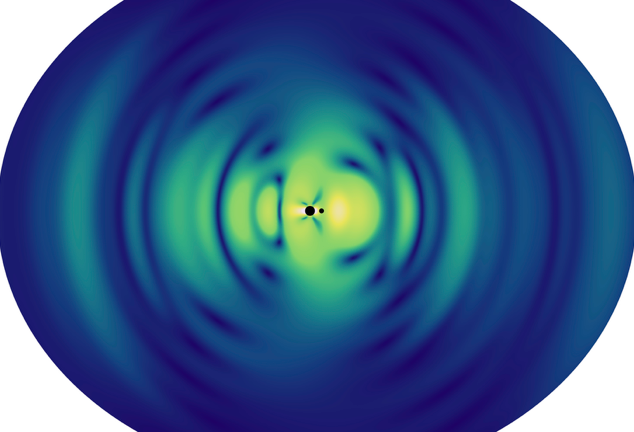Environmental Dynamics in Extreme Mass Ratio Inspirals

With the upcoming launch of the LISA mission, scientists will detect gravitational waves at lower frequencies than ever before, and this will bring new data on galactic centres and the monstrous black holes that reside there - as well as new tests of Einstein's general theory of relativity itself. One of LISA’s main goals is to observe systems in which the remnant of a dead star (a black hole or neutron star) slowly spirals in towards a supermassive black hole. These events produce long-lasting gravitational waves that can be tracked over one year or more, making it possible to detect even subtle disturbances caused by gas, dust or dark matter. But to understand this, we need extremely precise mathematical models that fully account for the complicated interactions of the environment with black holes.
Until now, most studies have relied on simplified models that neglect key factors such as the black hole's spin. In this new work, we take a systematic approach by developing a new framework for modelling environmental effects around black holes in a fully relativistic setting. We present the first calculation of how a spinning black hole’s environment responds to the orbit of a companion body. As a concrete example, we model the environment as a cloud of ultra-light dark matter which has formed through black hole superradiance. We find that this cloud develops a distinctive wake structure as the companion body passes through it - and that the emitted energy fluxes can shift by tens of percent relative to non-spinning cases. This highlights the critical role of black hole spin in modelling the environment at the very centre of a galaxy. The work, by Conor, Thomas, Maarten and others, was published in Physical Review Letters.
May 29, 2025, 6 a.m.